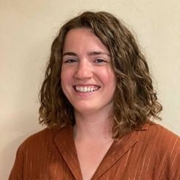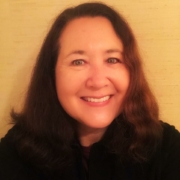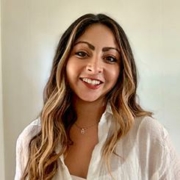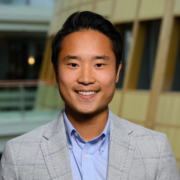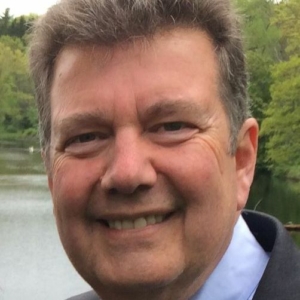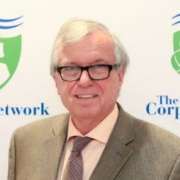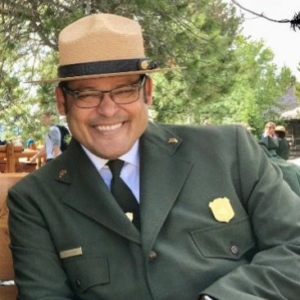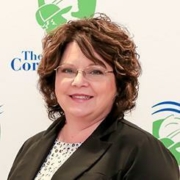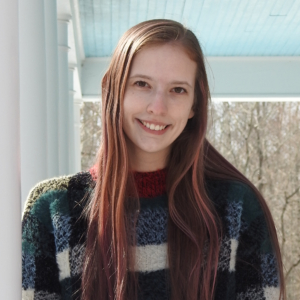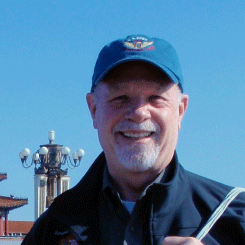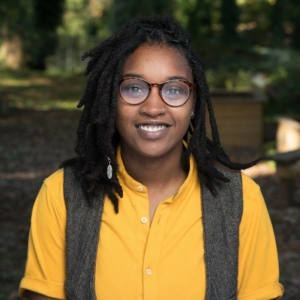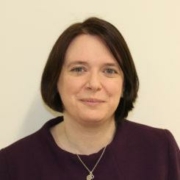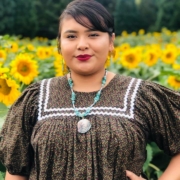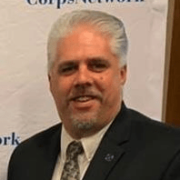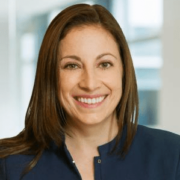
Jay Satz, Senior Strategic Advisor for Northwest Youth Corps, will be recognized as a 2024 winner of The Corps Network Legacy Achievement Award. The Legacy Achievement Award is one of the highest honors The Corps Network grants; it recognizes exceptional leadership and notable achievements within the national Service and Conservation Corps community. Honorees are those who have worked at least 15 years in the Corps world, served in a senior leadership position at a Corps, and made significant contributions to the national movement. We spoke with Jay to learn how he came to be involved in Corps and the impact he has made on the movement.
The 2024 Legacy Achievement Awardees will be recognized during The Corps Network National Conference, happening March 19 – 21 in Washington, DC.
Share a bit about your background.
I was born in Chicago but most of my childhood was spent in Westport, Connecticut. The town was a mix between rural and suburban, about 45 miles east of New York City, heavily wooded, located right on Long Island Sound, and full of history (the numbers on some of the houses weren’t addresses but rather, the year they were built). Even though I felt ready to leave after high school, I instinctively knew that it was a very cool place to grow up. I never really thought about just how special it was until I read Richard Louv’s book, Last Child in the Woods, where Richard laments the lack of connection today’s youth have with nature, and where his original articulation of the “children/nature deficit” came from. It was the opposite for my brother and me – we ran around collecting frogs and turtles in swamps, skating on ponds in the winter, wading through streams coming home when it was dark. My brother fell through the ice on a pond once. No cell phones, the gang of kids we were with just dealt with it. Different families in the neighborhood had cow bells they rang or horns they blew to announce dinner times. My son’s perspective on this when I told him stories of my youth was that I lived in Calvin and Hobbs neighborhood.
My mom is an artist and there was all of that cool influence around from her. My dad was a publishing executive in New York City which led to some amazing connections and experiences with authors and sometimes even movie stars. But with the exception of family skiing trips to Vermont that my mom made happen – sometimes through sheer force of will – my real introduction to the more remote outdoors wasn’t with my family, but through the YMCA camp system, first day camps and then sleep away camps. And then as a young teen I went to a camp called Tumbleweed Ranch in the Catskill Mountains where I got to ride a horse (and take care of them) all day for half a summer and I just loved being outside all the time, in the mountains. I went back to work at Tumbleweed Ranch for four summers as a wrangler, aged 18-22. I learned how to shoe horses (and shoeing three or four horses every day of the summer), got up at 4:00 a.m. to round up 120 head of horses, and ride and fix fence lines. I also taught kids how to ride and was a cabin counselor. As much as I thrived with the work part, one of the very few total “Aha” moments for me that I’ve had in my life happened as I realized that I was passionate about working with young people.
How did you become involved with the Service and Conservation Corps community?
Ah, we are just on the second question and you have uncovered my secret – it was nepotism! My kid brother Jonathan was working at SCA in 1986. As a teenager in the mid-1970’s Jonathan had found the SCA high school program and participated for two summers in crews at national parks in Utah. He went on to serve as an SCA intern and as an SCA crew leader when he was in college, which led to his becoming a National Park Service (NPS) interpretive ranger at Colorado National Monument, and then he went back east to become SCA’s first full time Recruiting Director.
I hadn’t really known or thought much about SCA as he was experiencing it as a teenager, but after Jonathan’s last crew leading gig with SCA in the early 80’s, he joined me on a trip to Alaska that I had put together for some friends. As we were paddling a kayak around the icebergs in Glacier Bay, he shared SCA stories, and I finally had enough context to be intrigued about SCA’s history, missions, and programs.
Fast forward a couple of years, in early Spring of 1986, I was living in Seattle and working as a bookseller at Elliot Bay Books, a large independent bookstore. Jonathan called me to ask if I knew anyone in the area who would be interested in co-leading a pretty new SCA program designed to get Seattle urban kids out on a five-week conservation work crew in partnership with the U.S. Forest Service (USFS). He had a returning leader set for the female slot and was running out of time to hire a qualified male leader. I asked him a lot of questions, in enough detail that I think surprised my brother, and then 45 minutes later I greatly surprised us both by asking, “How about me?” The story is way longer, but essentially, he said, “Here is the phone number for Su Thieda, the returning leader. Go talk to her. If she thinks you can do it, maybe this might work.”
Su said yes, mostly based on my camp counselor experience she told me years later, and I was rushed off to a crew leader orientation in Denver, where I spent a weekend being introduced to a new culture and community that is still at the foundation of my life. A month or so later, I was sent off to a week of conservation work skills training in Yellowstone National Park being run by Carroll Vogel (another SCA legend). That single week was life changing – I met lifetime friends on that course and realized that trail work was both a passion and something I had real intuition for. And then summer – five weeks in the Cascade Mountains on the Cle Elum Ranger District where Su turned out to be an amazing crew leader, and a very gifted teacher and mentor (and now lifelong friend). Living in the woods and doing this very cool and satisfying work – all while truly learning about life from ten teenagers from all over the world, (Cambodia, Viet Nam, Korea, India, and Seattle) changed my life’s trajectory completely. I was hooked.
Who are some of your personal and professional heroes?
Wow, it’s a big list! I have quite a few professional heroes. I could write ten paragraphs about John Twiss, who was chair of the Board at the Student Conservation Association (SCA) (where he served from 1986-2009) when I joined the staff full-time in 1988. He was one of the notable American citizens of the 20th century that few people may recognize. He has a mountain in Antarctica named after him; he was the founder and executive director of the Marine Mammal Commission, and a leading ocean conservationist. He did incredible things to support SCA, and individual staff members during good times and hard. His battle with Parkinson’s that eventually took him from us was inspirational.
Bob Stanton is another man of that era I look up to and who I feel so fortunate to have received mentorship from and to call a friend. Flip Hagood is on that list too, he taught me to how to be a mentor through his extraordinary example.
My other huge hero who straddles the professional/personal is Liz Putnam, for which a list of inspirational attributes I deeply admire would take far too long to list here. Scott Weaver, my long-time boss at SCA, his belief in me, and the indefatigable support he provided me and my family during the very dark times of a prolonged family health crisis early in my career is directly responsible for me having been able to still be in this industry.
My biggest personal hero is Meg Satz, who I was lucky enough to marry almost 35 years ago. Her tenacity, steadfastness and fierceness in the face of adversity has been oft tested and is truly inspirational; her spirit for adventure immense; and the level of support she has provided me in this work is immeasurable.
What is the primary piece of wisdom you’d give to Corps staff working today?
First and foremost, I encourage us all to take on this incredibly challenging and meaningful work with true urgency, but not with impatience. Keep your eye on the goal, be solution oriented, and embrace failure as a tool to move you forward to eventual success. Take the time to learn new skills, to be comfortable practicing your ability to be impactful without always rushing to the next position, the next job, or the next thing. Be willing to go deep and stay in for a longer haul. And, equally important, take time along the way to enjoy the special environments you are in, and the company of the incredible people you are sharing those spaces with.
Second, think broadly about how you measure success. As wonderful and important as our conservation and funding partners are (and they truly are indispensable allies), do not let those partners solely set the measurement criteria for either your personal or organizational success. We cannot rely alone on metrics measuring miles completed, acres treated, or percent of overhead achieved to measure the deep positive and lasting impact we are having on the world by providing critical and life changing experiences to the next generation of leadership for this country.
What is your advice to young people serving in Corps programs today?
Well, I would start by expressing a sincere thank you for the deliberate choice every Corpsmember has made at a young age to serve something greater than themselves. Serving both conservation and community is an investment in making the world a better place. By having made this choice, members are already on a trajectory toward living a consequential life. The few bits of advice I might offer to help along the way might include:
Work hard to be authentic and transparent in your relationships within your Corps and with the people you serve. And respect other’s authenticity and vulnerability too.
Seek mentors. We don’t always have to learn everything on our own or through one’s own experience. Find a mentor who recognizes that you have things to teach them as well – it should always be a two-way street.
And finally, consider the advice mentioned above about the difference between urgency and impatience. I find that I must remind myself of that remarkably often!
From your experience, what can Corps do to help empower young people to become the next generation of leaders? What role can Corps serve in breaking down barriers to success and providing paths for opportunity youth?
You know, all Conservation Corps are special, but not too many of us are unique. For some differences we might have in structure, or focus, or geography, we all have and use the same magic formula – this beautiful mix of conservation, youth development, building community, service. It is powerful, powerful work that we all do.
Even though some of us have different models and alternative approaches, I think that in the Corps Community, almost everything we do in the way we run our programs is empowering our members and building their leadership. The more we can do to provide a continuum of experiences for Corpsmembers to grow and move through the next step – whether at our own Corps or by transitioning to another Corps or to our partners – the sooner those members will see that leadership isn’t something to aspire to, rather, it is something that they already have within. But leadership is also something that requires constant application and practice, practice, practice! Corps should work together to provide bridges to as many cross opportunities as possible for that application, practice and continued growth.
What is your fondest memory or favorite anecdote from working in the Corps world?
I have so many, but one single special moment that still resonates with me is around the early beginnings of an SCA program that would become the Mount Rainier Recovery Initiative. For context, in early November 2006, there was a pineapple express that roared through Washington and British Columbia – a warm, wet tropical pacific storm system that dumped 24 inches of rain on Mount Rainier in 36 hours, on top of many feet of new early autumn snow. The result was truly catastrophic flooding that caused what was later calculated to be $36 million of damage to park resources and closed the park to the public for six months. The damage was breathtaking – multiple roads gone, a four-acre campground washed away down the Nisqually River, utilities gone (we didn’t learn what happened in the backcountry until late spring, and that was crazy too). That there was no loss of life from NPS staff evacuating the historic Longmire area was a blessing. The staff was traumatized, and superintendent Dave Uberuaga had to manage so many different conflicting priorities that I didn’t really think he would accept “a pitch” to do a flood version of the Greater Yellowstone Recovery Corps. But Dave was both a visionary, and, as his staff was managing dozens of calls a week from people wanting to help the park with both donations and labor, a perceptive and pragmatic public relations manager.
So in late December, Dave brought about 25 key members of his staff together to hear Scott Weaver and me make a pitch for a recovery Corps, and it was pretty clear that most of the people in the room didn’t really want to be in the room, and didn’t want to hear us – a significant number of the staff were actually urging that the park stay closed, perhaps for years. Rather than try to explain what SCA hoped to do, I shifted focus, and asked the group which projects in their area of responsibility needed to be done. The buzz started to build, and for two hours I wrote each project suggestion from an increasingly enthusiastic group of professionals to this huge whiteboard in front of the conference room.
Finally, as Dave pointed to me and his watch to wrap things up, I turned my back on the crowd for the first time to read everything I had written on the board, which took a few minutes. I ended up circling three things, then turned back face everyone in the meeting and said, “I don’t think we can do these three things I circled, but I think we can do everything else.” The energy in the room had changed dramatically and it was that moment that launched the Mount Rainier Recovery initiative, an effort that did complete every other project listed on that white board over the next two years by engaging 4000 volunteers, providing over 160,000 hours of conservation service.
What would you say is one of your proudest achievements during your time working with Corps?
Wow, I’m not sure it is fair to think that I can boil down 37 years to just one example, so maybe I can get some leeway on this question?
At SCA:
- Leading crews, particularly co-leading the “India 3” crew of the Greater Yellowstone Recovery Corps with my (soon to be) wife Meg, 25 miles in the backcountry in the South District of the park in dense grizzly country. Other than co-raising two extraordinary kids, I’m not sure I’ve done anything more meaningful.
- Conceiving of and directing the Lightly on the Land publishing project. I got to work with my dear friend and mentor Bob Birkby, and a whole host of engaged experts of every stripe, including my dad, who guided me on the publishing side. And we are still in print 28 years later!
- The Mount Rainier Recovery Initiative mentioned above was an exhilarating experience. In addition to the incredible “on the ground” work accomplished, that was also my apprenticeship in congressional relations, working with Congressman Norm Dicks, who became a friend and mentor.
- Bringing SCA into the planning, co-hosting (and on two occasions, the leadership) of the Wilderness Risk Managers Conference, now for over 25 years.
- Last but certainly not least, the creation of the NPS Academy. First with a quartet of planners (Joey Ruehrwein, Susanne McDonald, Mary Gibson Scott and me), then building it deeper with other amazing folks like Vanessa Torres, Josh Kleyman, Jill Baum, Megan Kohli, Rob Terry, Millie Jimenez and many others (kudos as well to the team at ACE who took this groundbreaking program to the next level). This program, more than any, has provided me with the deepest, lifelong friendships from Corpsmembers and NPS staff who shared in the wonder of running this program together.
At Northwest Youth Corps, Jeff Parker, a remarkable leader of our movement, gave me the most creative freedom for program development that I had ever had in my career:
- Working on designing and implementing Rainbow Crew for LGBTQ+ youth, which had been a dream of mine for a couple of decades actually, has been inspirational to be part of (Elyse Rylander of OUT There Adventures, my partner in making it happen, is now like family). It was particularly awesome to launch it as a youth program and then be able to see in mature and extend it to young adult programming a few years later, crew led by a graduate of an earlier Rainbow youth program! And heartwarming to be in touch with several of those original crew members from the pilot program and see what they are doing now (two of them now work for NPS at Mount Rainier NP).
- I am so excited with the Sound to Summit program’s growth and extended reach and impact. The pilot was a bit of a disaster, sort of Apollo 13 like, but everyone connected knew it was the right idea, and we all stuck with it until we got the implementation right..
- I’m very proud to have supported Jay Runte and his small team in launching NYC’s Intern program. The program’s growth and impact has been impressive, and wholly based on both its quality and the commitment of our partners.
Is there anything you created, learned, or achieved in your position that you believe can be translated to other Corps across the country?
I am honored if folks think that anything I may have achieved could/would be of assistance to another Corps. Whenever possible, the programs I’ve helped launch or run were purposely designed to export throughout the Corps Community.
But in terms of what I have learned, I can say that my early enthusiasm for our work was very backcountry, wilderness focused. I came to the experience of backpacking and wilderness adventuring in my very late 20’s and as I connected to SCA and legacy programs in national parks like Yellowstone, Mount Rainier, Grand Teton, Olympic and in western mountain forests, these remote places were where I wanted to be.
But I also started right off in this work connecting with youth from urban America, and I eventually came to this realization – that while it is great to connect those youth to more wild places, it is equally essential that these youth see how wilderness and non-built environments affects them – personally and their families – in their own urban communities, and also how they impact those far away ecosystems from how they act at home. The beauty of the Sound to Summit as a program is members get to see both ends of that spectrum in the same program.
I think that as we measure the influence from all our collective work that we do as a movement to protect our more remote public lands and to maintain healthy ecosystems, that we need to recognize the huge positive impact that all of our urban corps are having. Those programs are having a dramatic affect on not just on the communities where they live and serve, but also on how those members perceive remote ecosystems and then understanding the importance and relevance of those ecosystems to their own urban lives, and for that matter, to the whole planet
You played an important role in implementing several identity-based programs at Northwest Youth Corps, such as the Rainbow Crew program for LGBTQ+ youth. Talk to us about why these programs, or specifically why they matter to you. What does an affinity crew provide to a Corps member that a general crew cannot?
I think the importance of these kind of programs for me, flow from a foundational experience in my late twenties, when I traveled in The People’s Republic of China in 1984 for two months with a friend. The country really wasn’t open yet to individual travelers (tightly controlled tour groups only) and was in the midst of one of the scariest campaigns since the Cultural Revolution– this one against “spiritual pollution” where people were actually being executed for embracing western culture. On this lifetime adventure, besides all that I learned about the history, culture and all of the beauty and tragedy of that amazing country, I also learned – deeply – two things about myself.
The first thing I learned was what it was like, and how it felt, to be different from the majority. Once traveling outside of Beijing, most of the time my friend and I were the only white people to be seen. We drew crowds everywhere we went, and we were stared at. I was waiting in line to buy a bus ticket and I felt a tug on my arm hair – a very old gentleman was pulling on it in amazement (a more pleasant encounter was when a young boy asked shyly – in pantomime with a big smile – if he could touch my beard). I learned only a minimal amount of Chinese but I learned to recognize two words that roughly translated into “old rice”, a derogatory reference to me and my Caucasian heritage (I had many more positive than negative interactions, but the negative ones were eye opening).
The second thing was slower to reveal. I’d love to tell the whole story, but it is probably too much for this space. But about a month into the trip, I had a specific conversation with a gentleman who in a very matter of fact way, shared his story of surviving the Cultural Revolution. While listening to his story, I had a profoundly insightful moment into understanding my own wealth and privilege.
I don’t know if many people can recount a single conversation that changes their world view, but that’s what happened to me, right there, right then. That experience put me in a much better place two years later, co-leading my first SCA program to engage with a Corpsmember – a young woman named Mao, from Cambodia. Mao did not know how old she was, because all official records in the country were destroyed to designate Year Zero, the dictator Pol Pot’s attempt to reorder society. All her family was killed in purges except an older cousin, who traveled to the US with her. And yet here was Mao, volunteering to live in the mountains for five weeks to do trail work. But despite her inner strength, and tenacity on the work project, Mao was not a strong a hiker and was too often challenged or belittled by another member of the crew, male, who was a stronger hiker and worker.
As leaders, I think that Su and I were able to mitigate the situation once we figured out what was happening, but that planted the seed for me about how a program could work for Mao that celebrated her strengths and gave her the opportunity to work on areas of skill and/or endurance building that she was interested in, and supported by her fellow members. I think Mao would have loved to be on an all-female identifying crew, and as SCA developed community-based programming in the early 90’s, part of the program model was to put members new to the experience of conservation service work, camping and wilderness travel all together, to grow and learn together.
Finding space where members can challenge themselves at the level they desire without the extra challenges of managing the dynamics of other folks already comfortable in the environment is at the heart of our single identity programming. The goal isn’t to create a permanent safe space, but rather to create space that allows the participants to gain the skills and confidence they need to effectively function and then thrive in areas of majority occupancy. As exciting as it is to me to see our members thrive in the single identity spaces that Conservation Corps are now providing through these programs, it is even cooler to see members that moved from those programs into more traditional programs, or in more and more cases, into the workforces of our agency partners who are helping us provide these programs.
Thanks so much for allowing for this opportunity for introspection. So many of us have great stories to share!






